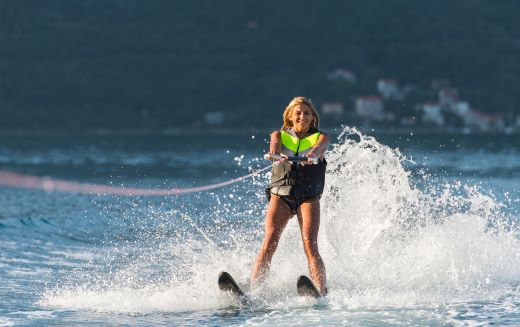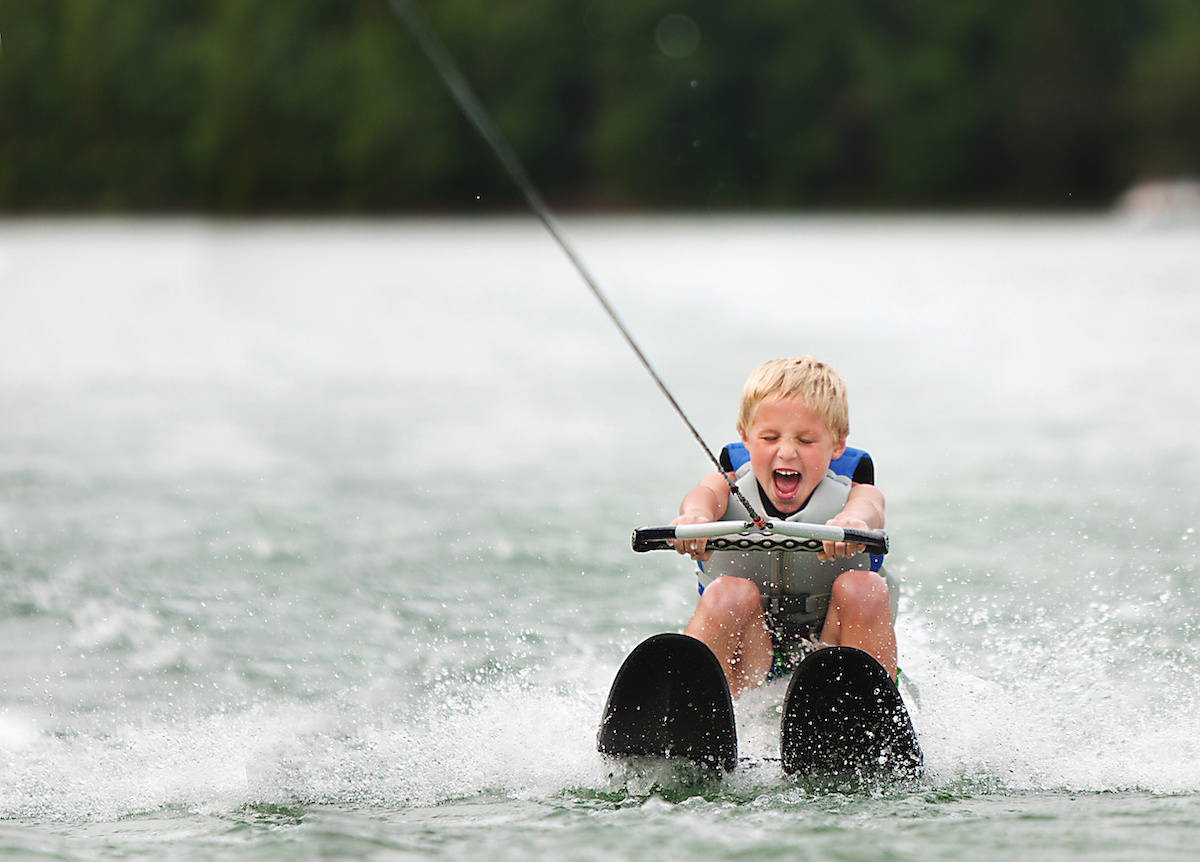Many of us have spent a day at the lake, watching tubers and skiers zip by, closely followed by their gleeful screams. If you’ve thought about trying water sports but aren’t sure how to dip your toes into these fun and exciting activities, the Pass The Handle movement was made just for you.
When is Pass the Handle?
Sunday, July 16th, 2023, is the main day to participate in Pass the Handle, but many places host activities during the week before, too!
Pass the Handle events are hosted at lakes, rivers, and coastal areas where towed watersports are common. Experienced participants provide guidance, instruction, and support for newcomers to try out new watersports in a safe and fun way.
Pass the Handle not only introduces new people to the excitement of watersports but also fosters camaraderie and community.
Research Watersports For Beginners
The first step in trying out new watersports is researching your options and choosing one (or a few!) that seems fun to you. All watersports have varying difficulty levels; you can find one perfect for your skills.
Tubing
Tubing is one of the most popular towed watersports, and it’s as simple as holding onto the tube. All ages and skill levels can try out tubing.
Tubing involves a boat pulling a tube with a tow rope. The driver can pull tubers nice and easy or use their boat’s speed and maneuverability to give tubers the ride of their life.
Prioritizing safety is essential when tubing, so you must designate a driver and a spotter to keep watch over tubers. Set up simple hand signals to communicate, and ensure everyone is wearing life jackets. These are a must when tubing, as you will likely fall off the tube.
Tubes come in many sizes and types, but all require specific kinds of towing ropes. Tubes should never be pulled from a wakeboard tower, as they can damage the tower and the riders.
Wakeboarding
Wakeboarding is a great first step into water spots. While it may take a few rounds to get up on the wakeboard, you’ll quickly become comfortable once you’re up. Wakeboarding doesn’t require much; a wakeboard, rope, and life jacket are all you need.
Once you’ve gotten some practice in getting used to the wakeboard and can stay up and in control for an extended time, try some beginner tricks like edging, crossing the wake, and jumping the wake. Always prioritize boating safety and keep your limitations in mind when pushing yourself to learn new skills.
Wakesurfing
Wakesurfing is similar to wakeboarding with one main difference: the surfer only uses the tow rope to get up onto the board. Once up and steady on the water, the surfer will let go of the rope and use the momentum to surf the wake created by the boat. They can use the power of shifting their body weight from one leg to another to navigate the waves.
Wakesurfing is more mellow than wakeboarding and can be more beginner-friendly, depending on your preferences. Wakesurfing can be done in calm or choppy water. In fact, choppier water can make wakesurfing easier.
A properly fitting life vest and a passenger in the boat to watch for any signs of trouble while the driver drives the boat are highly recommended to keep everyone safe.
Water Skiing
Water skiing is a classic watersport, possibly the first that comes to mind when you think of watersports. While it is a more challenging option, water skiing offers great practice in balancing on the water and building up core strength.
The water skier starts by floating in the water with their feet in the skis and the tow rope in hand. The boat driver slowly increases the boat’s speed pulling the skier up and out of the water. If the skier can keep their skis parallel and upright, they are skiing!
Learn More About Ski and Wake Boats
Be prepared to spend a lot of time in the water when learning to ski, and don’t get discouraged. It’s normal to fall when trying out a new watersport.
Skiing requires a wake or speed boat, the correct size water skis, a tow rope, and a life vest. Once you get the hang of it with traditional water skiing, you can get adventurous and try barefoot skiing.
Sign Up For A Class With An Instructor
If you’d like some practice before hitting the open water, consider watching how-to videos online or signing up for a class with an instructor. Most instructors offer individual lessons, custom training programs, group lessons, and day camps. Choose the class type that works best for your preferences and skill level.
And if your watersports skills take off, you can attend schools specially designed to take you from good to great, like these top ten waterski schools and wakeboard camps in the US.
Trying Watersports Safely
Fun in the sun may be on everyone’s mind, but boating safety is critical anytime you’re on the water. Two of the most essential watersport safety rules are:
- Never drink and participate in watersports.
- Always wear a life jacket or PFD.
Learning the standard watersport hand signals helps drivers and riders communicate effectively. From simple thumbs up / down to more advanced signals, knowing the basic signals can keep riders safe.
Conclusion: Try New Watersports This Summer
Learning a new watersport can initially seem intimidating, but the benefits far outweigh any nervous jitters you may have. Watersports perfectly combine getting active, bonding with friends and family, getting outdoors, and having fun.
Get ready to dive in, have a blast, and create unforgettable memories on the water!

